Although the wind is still blowing, it is not as hard as it was last night. Today was another day for drilling out on the platform. Our results continued to be mixed... sometimes we were pulling up good quality sediment core, other times we had trouble with sandy sediments.
Between "tripping" in and out the drill and cores, we had time to examine some of the sediments. Pavel Minyuk, the lead Russian scientist taught me about the different types of sediments in the cores we were bringing to the surface.
After several meters of lost sediment, we found this lump of very hard clay.
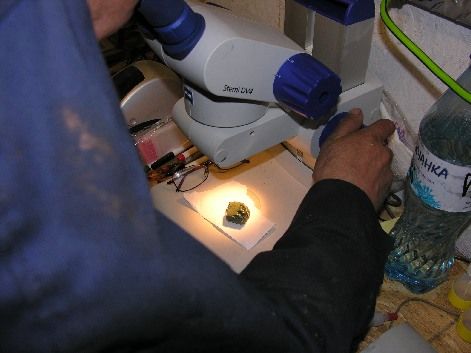 Clay sediment lump under the microscope.
Clay sediment lump under the microscope.
We also examined some of the coarse sediment under the microscope, including this piece of Vivienite.
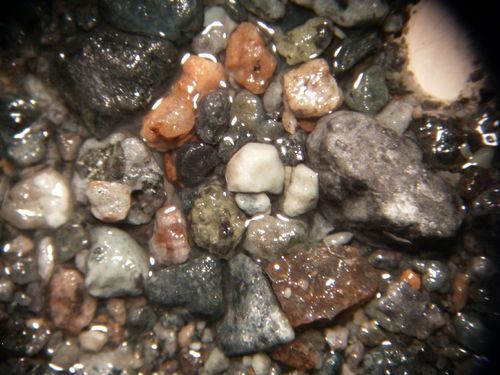 Larger granules sediments as viewed under a microscope.
Larger granules sediments as viewed under a microscope.
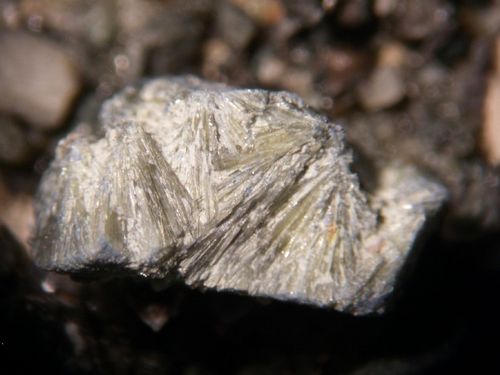 Vivienite crystal found in the sediment sample (viewed through microscope)
Vivienite crystal found in the sediment sample (viewed through microscope)
After several difficult shots, (attempts at drilling for core) we extracted several sections of hard layered clay sediments.
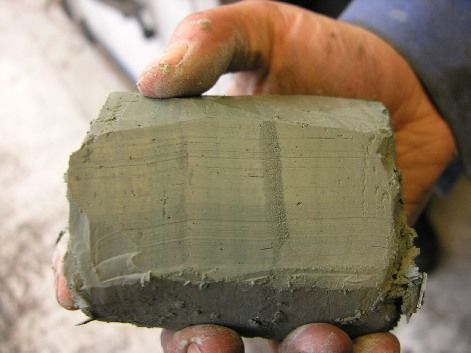 A small piece of a layered sediment core
A small piece of a layered sediment core
As the day's drilling continued to encounter some difficulty I was able to use some of the down time and complete the video I promised yesterday... Thanks to the stunt men/drivers, Zhena and Baika, and Volker Neth who helped shoot some of the video.
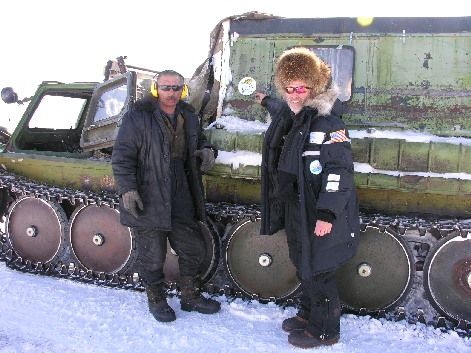 Zhenya and T-Mart beside the GDS
Zhenya and T-Mart beside the GDS
One question that all of the international scientists here in camp have is, how do you spell the name of the Russian All-Terrain Vehicle (Go-Anywhere-Vehicle)? Is it...Westechod, Wesdechod, Vezdehod, Vestehotte, Vestahot, Vastehot, Vastahot, Vestehoat, Vestehaut, Vestehoet, Vestahoet, Vastehoet, Vestehoet, Vastahoet, Vestikhot, or Veez'dahoot
SOOOO....how do you get to work on a Monday morning?
T-Mart...Staying Warm at Lake E

